Case 11
- Cloth Bindings, 1830s-1840s
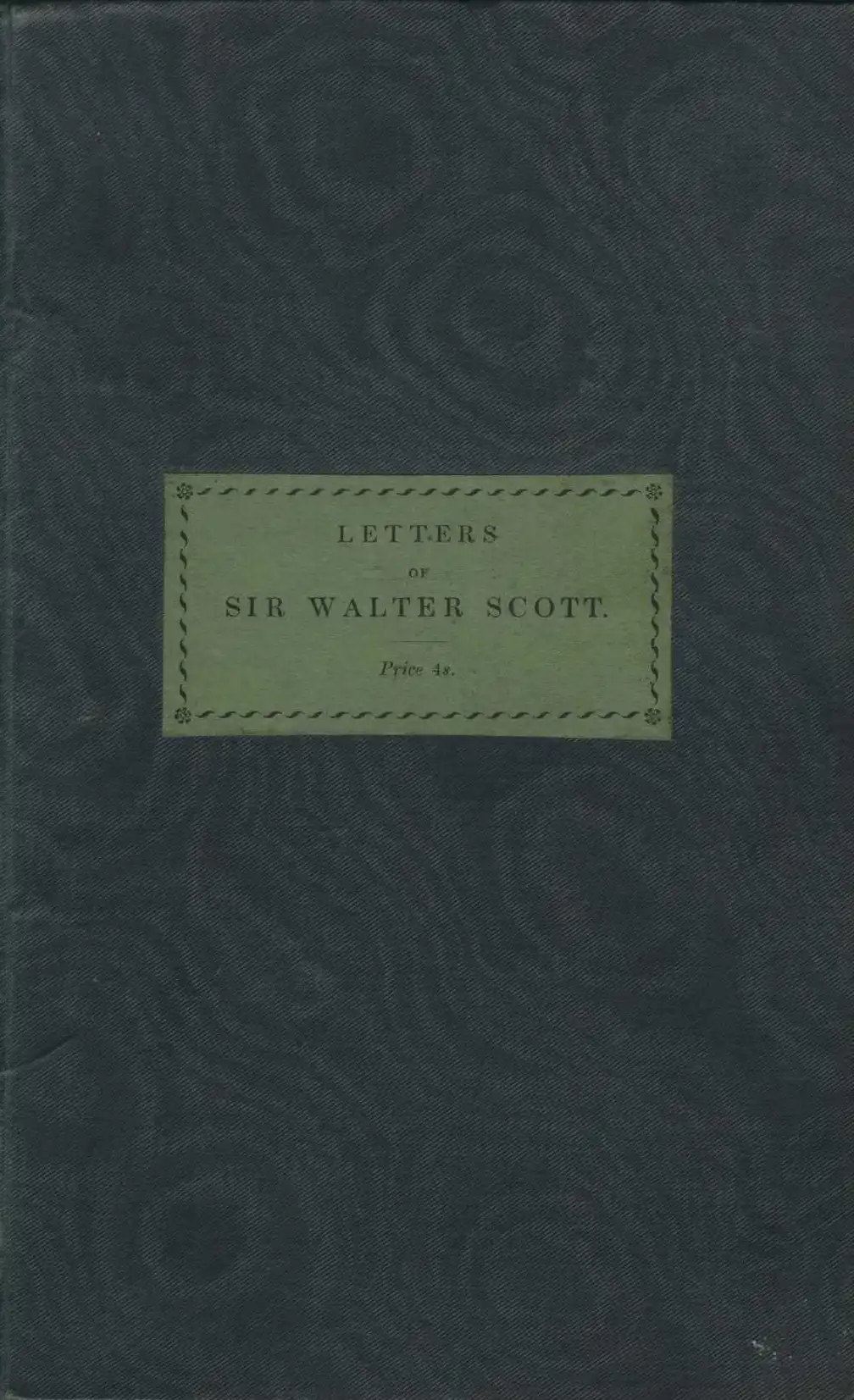
Sir Walter Scott. Letters of Sir Walter Scott. London: J.B. Nichols and Son, 1832.
At the start of the nineteenth century, the technology for printing and binding a book had changed little from the previous 350 years. The origins of today’s book market lies in the 1830s when a huge technological breakthrough occurred – the emergence of cloth bindings which could be mechanically decorated and lettered. The cheaper alternative of cloth made it possible to issue whole editions of books in identical bindings. Book coverings of the handpress period could be both colourful and decorated, but the ornamentation was essentially abstract, bearing no relation to the contents of the book. This gradually changed with the designers of the Victorian cloth binding.
Bound in dark watered-green fine diagonal-ribbed cloth with paper label on the front cover, this copy of Scott’s Letters is a typical example of an early cloth binding. Early cloths tended to be plain and dark in colour. Paper labels on the spine or cover increasingly gave way to gold-blocking throughout the 1830s and 1840s.
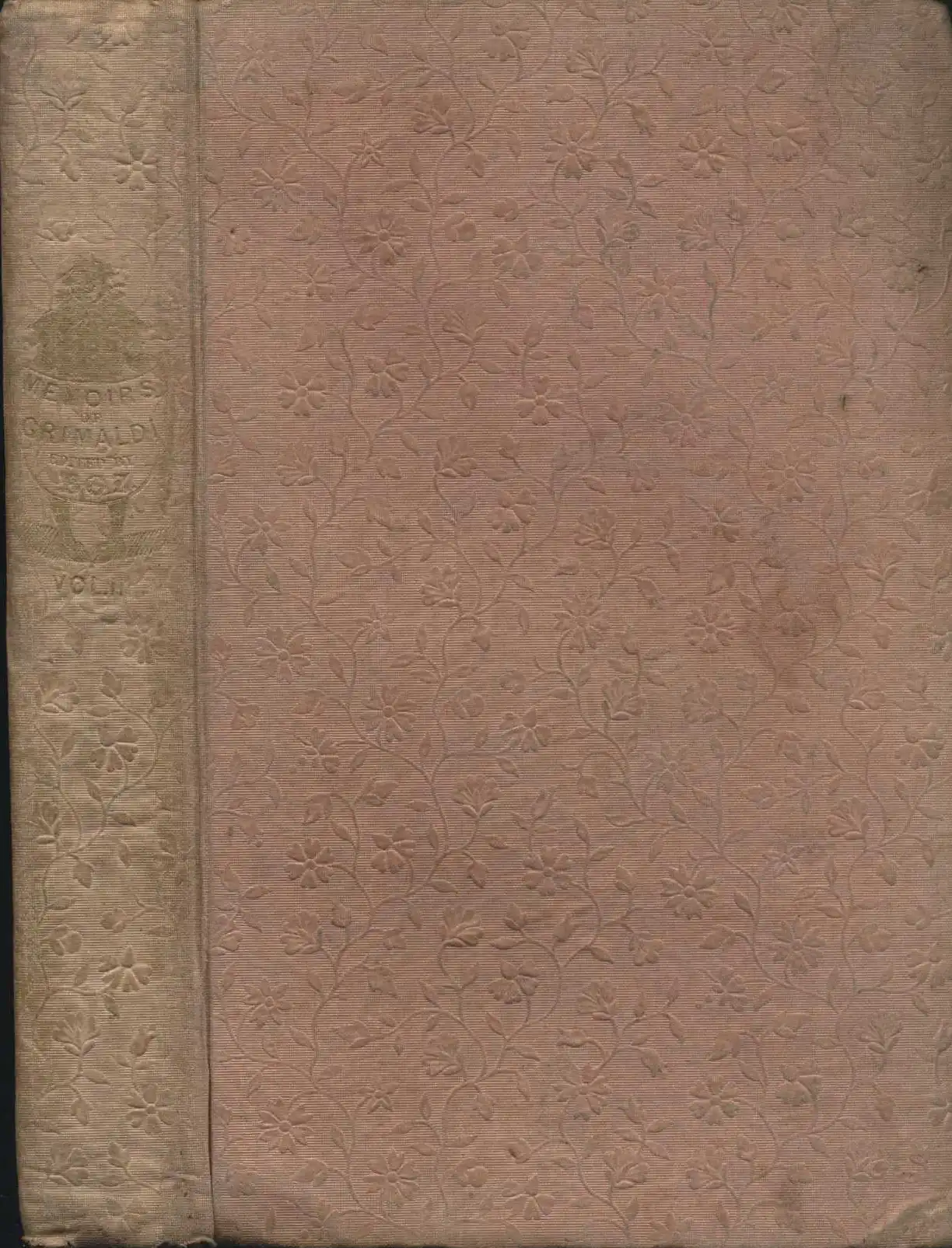
Charles Dickens (editor). Memoirs of Joseph Grimaldi. London: Richard Bentley, 1838. Two volumes, Vol. 2 displayed.
This book is bound in pink cloth blind-blocked with a repeating floral design (probably with a ribbon embosser) and a fine background horizontal rib. The title is gold-blocked on the spine within a caricature of Grimaldi (a professional clown). The floral design extends over the edges of the book and into the pastedowns and may indicate that the cloth was not especially made for bookbinding. Diffuse repeating flower patterns were a common graining in the late 1830s; few examples exist after 1840.

Charles Dickens (editor). Memoirs of Joseph Grimaldi. London: Richard Bentley, 1838. Two volumes, Vol. 2 displayed.
Open image in new window
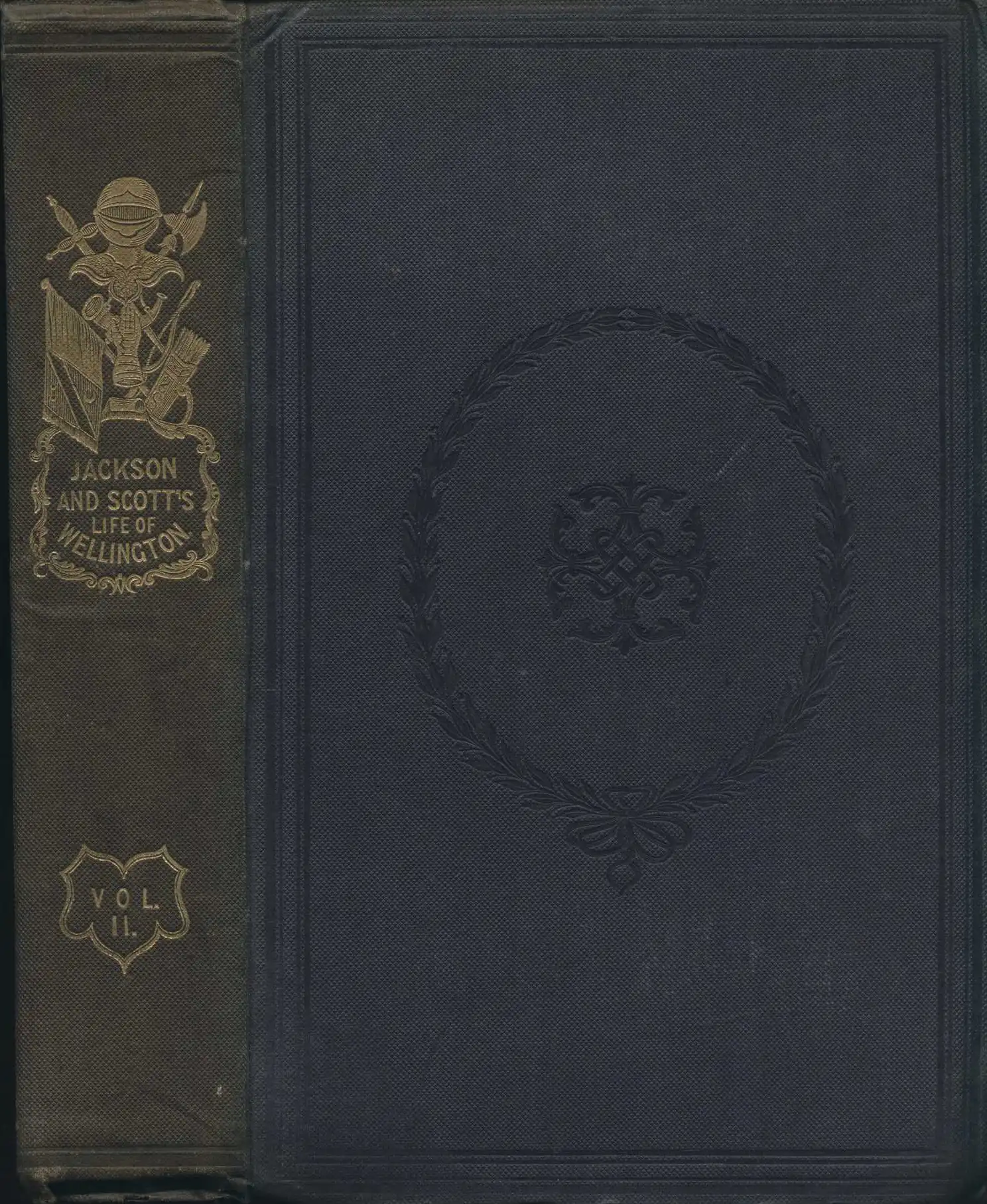
Basil Jackson and C. Rochfort Scott. The military life of Field Marshal the Duke of Wellington, K.G. &c. London: Longman, Orme, Brown, Green, and Longmans, 1840. Two volumes, Vol. 2 displayed.
Bound in dark blue bead-grained cloth blind-blocked on front and back, with gold-blocked spine, this book features an emblematic centre-piece in the Regency style. Ornamentation influenced by Regency taste was a common feature of early Victorian cloth bindings.

Basil Jackson and C. Rochfort Scott. The military life of Field Marshal the Duke of Wellington, K.G. &c. London: Longman, Orme, Brown, Green, and Longmans, 1840. Two volumes, Vol. 2 displayed.
Open image in new window
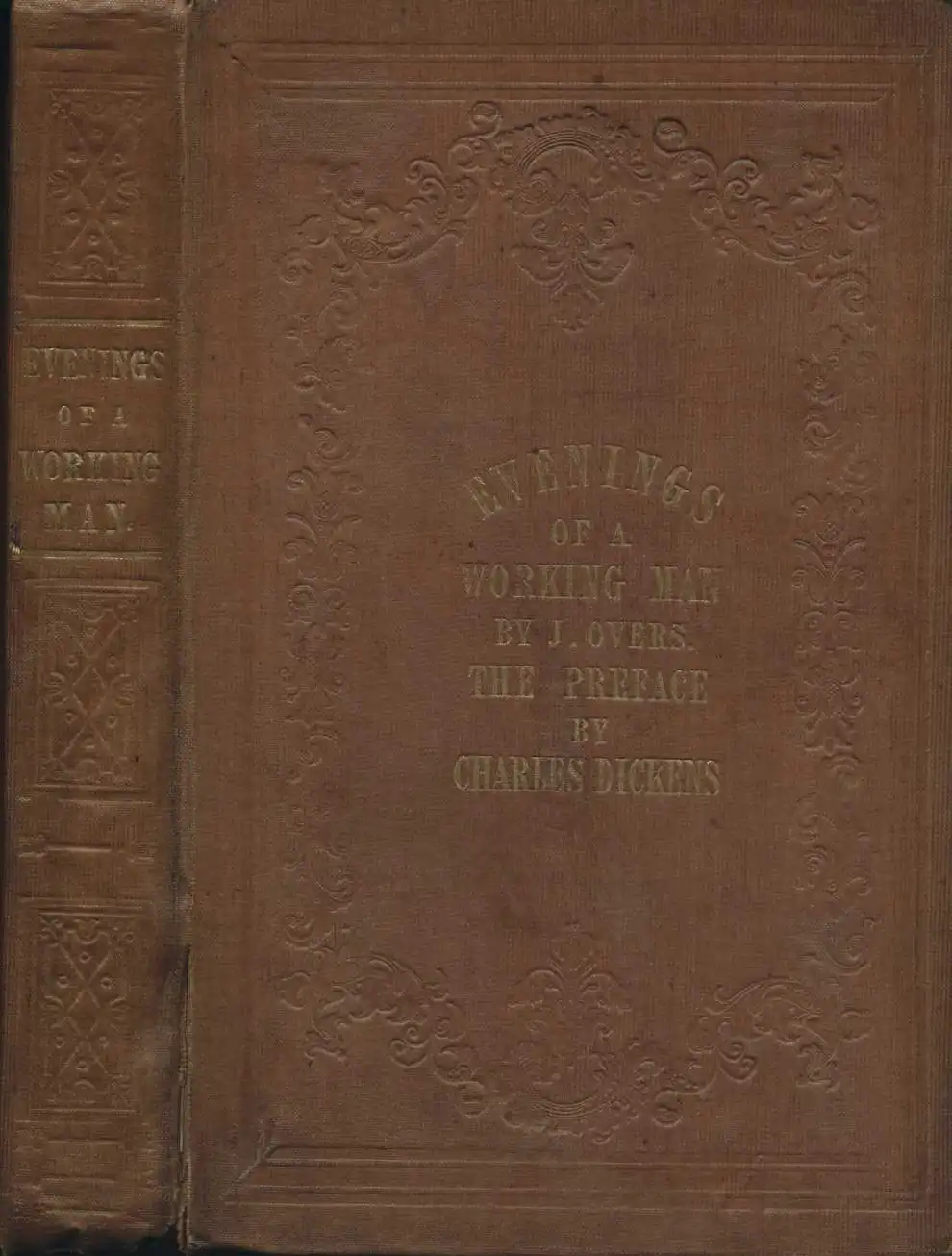
John Overs. Evenings of a working man: being the occupation of his scanty leisure. London: T.C. Newby, 1844.
This book is bound in brown rib-grained cloth, blocked in blind and gold on front and spine; blind-blocked on back. Graining – the embossing of a raised pattern - was a principal means of the surface decoration of cloth. The earliest forms of graining simulated morocco leather. Originally done by the binder, graining was later performed by specialised cloth manufacturers, becoming a distinct trade by 1840.

John Overs. Evenings of a working man: being the occupation of his scanty leisure. London: T.C. Newby, 1844.
Open image in new window
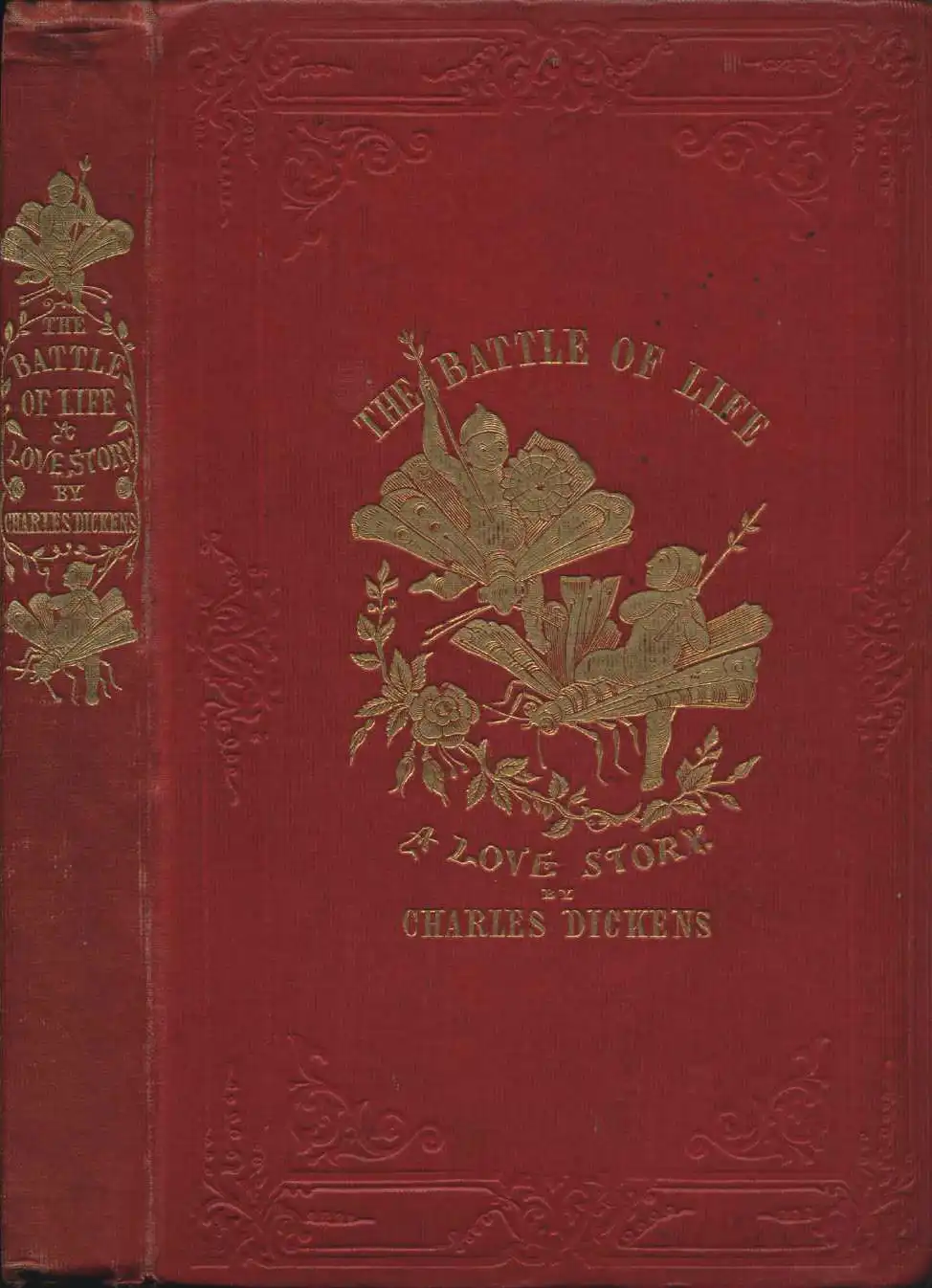
Charles Dickens. The battle of life: a love story. London: Bradbury & Evans, 1846.
This little book is bound in red rib-grained cloth blocked in blind and gold on front and spine, blind-blocked on back. From the 1840s, there was a growth in gold cover decoration, not only with lettering, but with pictures or designs. Dickens’ Christmas stories were often designed as gift books. The central gilt vignette on the front board is not copied from an illustration inside the work, but has been especially designed for the binding.




